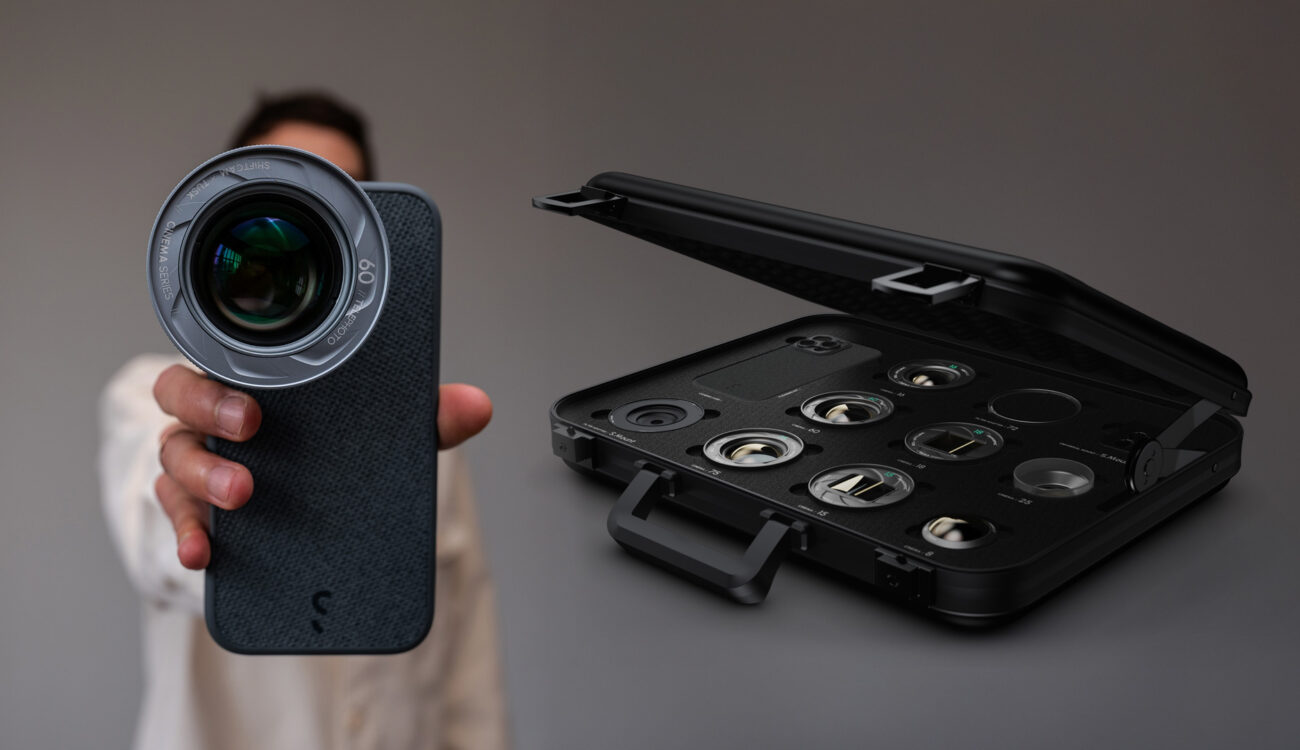
CINEMA//Series is a new mobile filmmaking system launched by TUSK in collaboration with ShiftCam. It’s designed specifically for iPhones and includes seven lenses, eight magnetic filters, a custom mounting case, and a few extras. The Kickstarter campaign is already well past its funding goal, with over 120 backers and nearly a month remaining.
ShiftCam positions the CINEMA//Series as a way to get more cinematic control out of a smartphone. But with a price that high (the full kit is priced at $1,949)—especially once you factor in the cost of a flagship iPhone—it’s worth asking if this is still about mobile convenience or if it’s drifting into full-on camera rig territory.
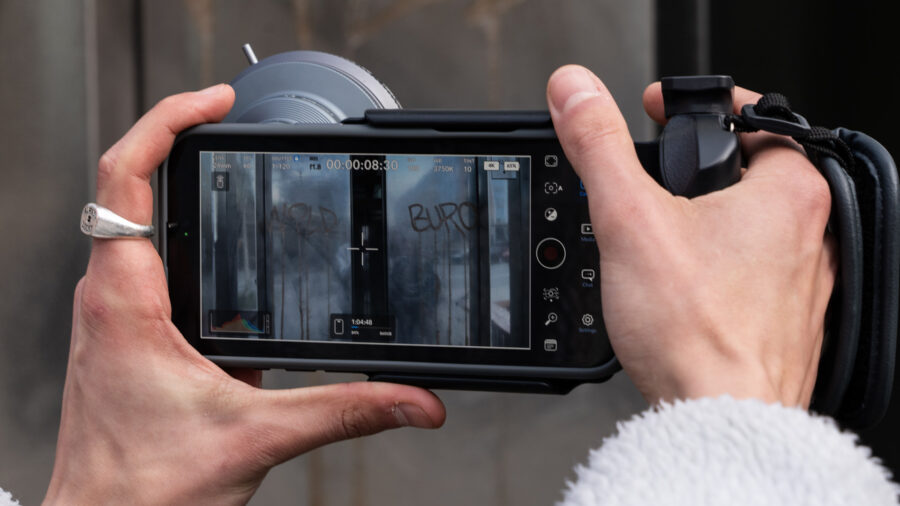
The TUSK Collective
TUSK is a group of working filmmakers. They’ve done commercial and doc work and seem to understand what it’s like to deal with gear under pressure. This doesn’t feel like a cash-in—it looks like something built by people who’ve invested their time in solving real problems on set.
They’ve partnered with ShiftCam, a company that’s been making smartphone lenses and accessories for years. With TUSK focusing on use-case and design and ShiftCam handling production, CINEMA//Series is clearly trying to land somewhere between DIY flexibility and traditional gear workflows.
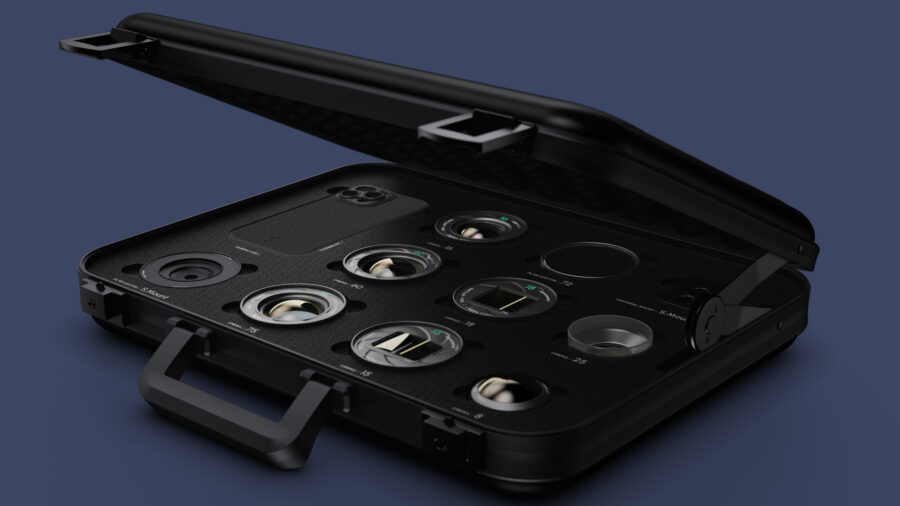
The Full CINEMA//Series kit
The full CINEMA//Series kit includes:
- 7 fluorite crystal lenses
- 8 magnetic filters (72mm)
- S-Mount iPhone case with twist-lock interface
- Magnetic filter adapter
- Lens and filter caps, storage cases, mounting accessories
The system works with iPhone 14 Pro through 16 Pro Max and uses a twist-lock mechanism on the included case to mount the lenses. A magnetic 72mm filter adapter is compatible with five of the seven lenses. They used recycled aluminum for the lens housings and built the glass elements from fluorite crystal with multi-layer coatings.
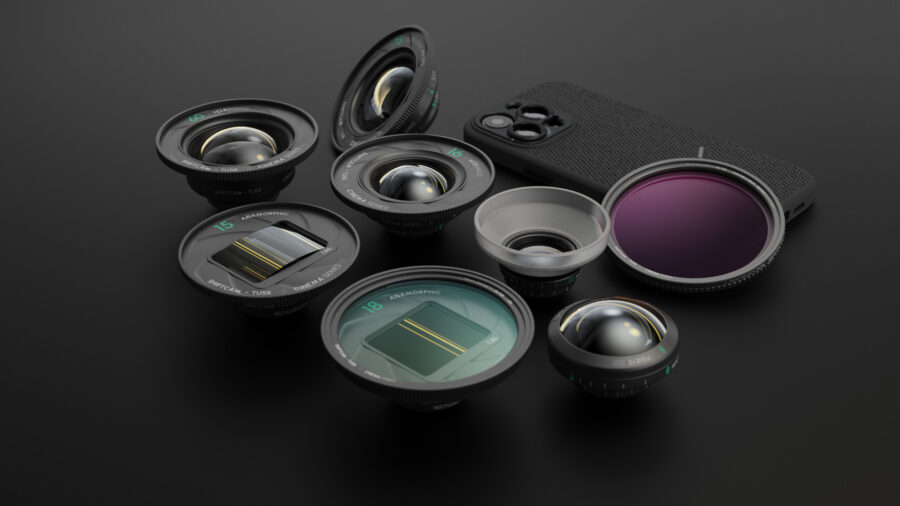
Individual lens options and lower-tier pledges
If the full $1,949 kit feels like too much, there are lower-cost options. Backers can pledge for a single lens, a filter, or just the mounting case. It’s possible to build out a smaller kit or add components over time.
That said, the individual items are still relatively expensive. These aren’t impulse-buy accessories—they’re priced more like entry-level camera gear.
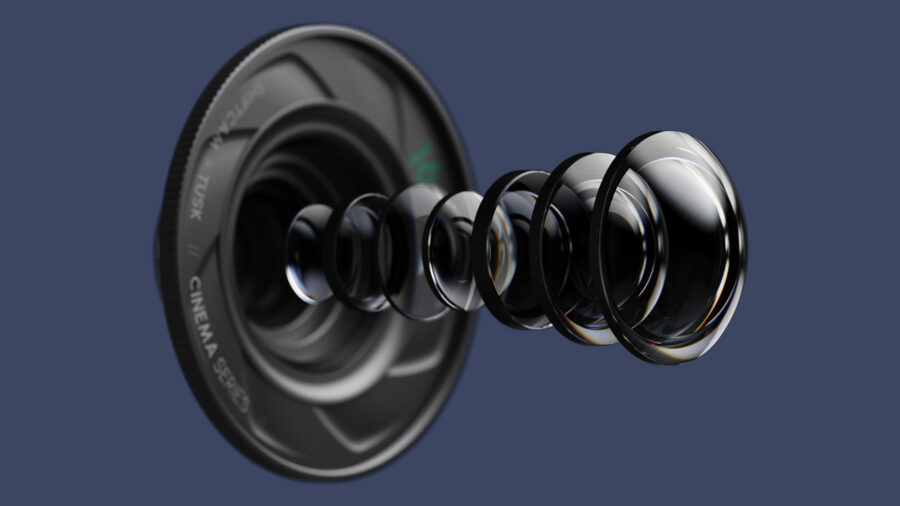
The lenses
- 60mm Telephoto
- 75mm Long-Range Macro
- 18mm 1.33x Anamorphic
- 15mm 1.55x Anamorphic
- 16mm Wide-Angle
- 25mm 10x Macro
- 8mm 200° Fisheye
The lineup covers most of what you’d expect: two anamorphic options with different squeeze factors, a pair of macro lenses for close-up work, a telephoto, a wide, and a fisheye. The macros are differentiated by working distance. The fisheye pushes to 200 degrees and is clearly meant for stylized shots.
The lenses use fluorite crystal and multi-layer coatings. The designers built them to reduce chromatic aberration and edge distortion, according to the specs. At this price point, that’s the baseline expectation.
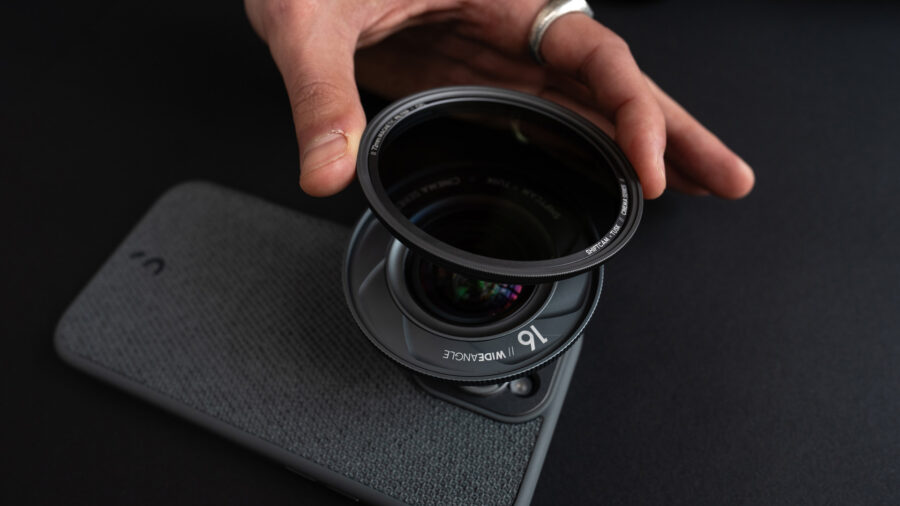
The filters
- Circular Polarizer (CPL)
- Black Mist 1/2
- ND8
- ND64
- ND128
- ND512
- Variable ND (1–5 stops)
- Variable ND (6–9 stops)
You attach the filters magnetically using a 72mm adapter and can stack or swap them quickly. It’s a straightforward system for adjusting exposure on the fly.
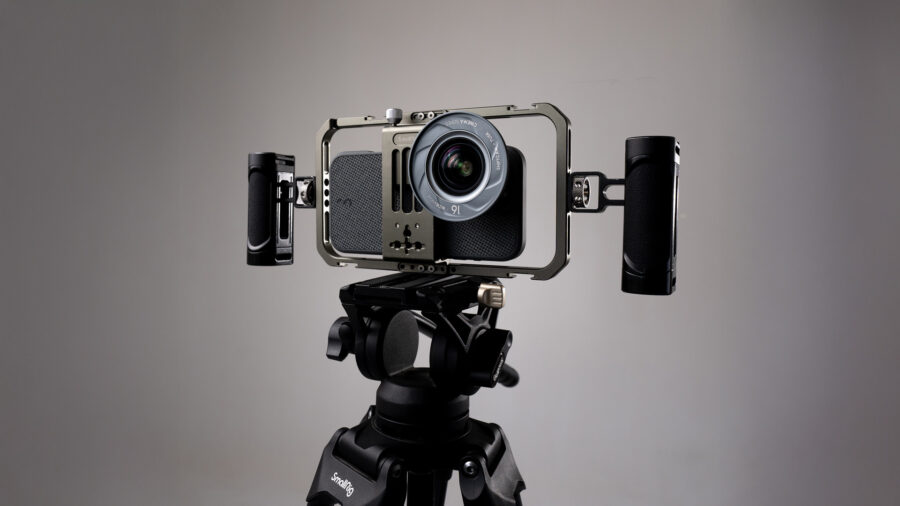
CINEMA//Series in the mobile filmmaking market
CINEMA//Series is launching into a space that already has some notable players. Beastgrip’s PL-mount adapter was used to shoot O₂, a short film captured entirely on iPhone. We covered that production here.
Moment recently overhauled their lineup to work better with newer phone designs. More on that in this article.
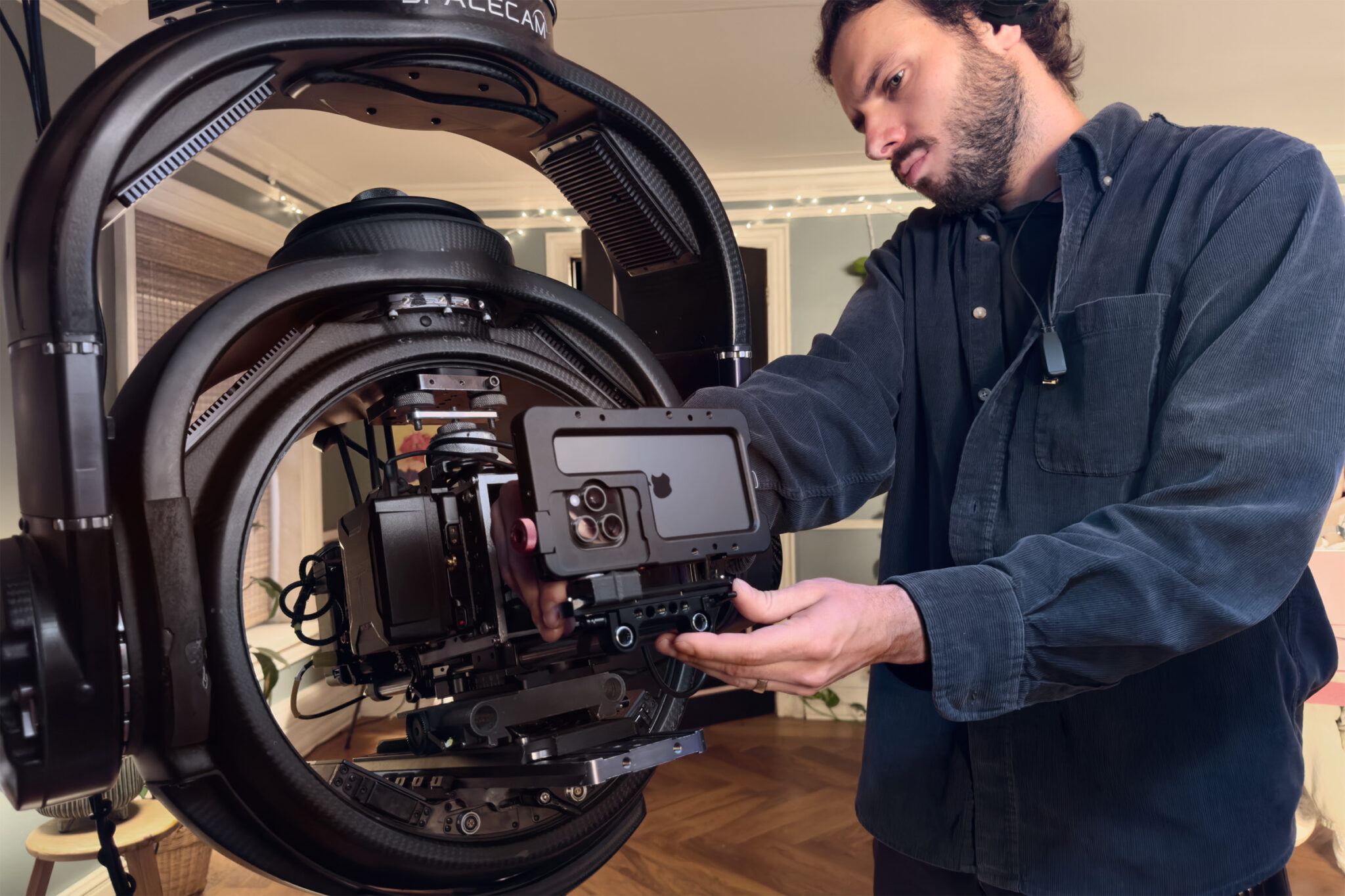
Apple itself continues to promote the idea of the iPhone as a pro filmmaking tool, but behind-the-scenes coverage from its iPhone 15 Pro campaign shows just how much traditional gear is involved—cinema lights, grip, stabilization, and a full crew. The phone is one part of a much bigger setup.
Pricing perspective
The full kit clocks in at $1,949. Add that to the cost of a new iPhone and you’re well into cinema camera territory. A RED Komodo OG isn’t out of reach at that point. It’s not a one-to-one comparison, but it does raise the question of what you’re gaining by building out a phone rig this complex.
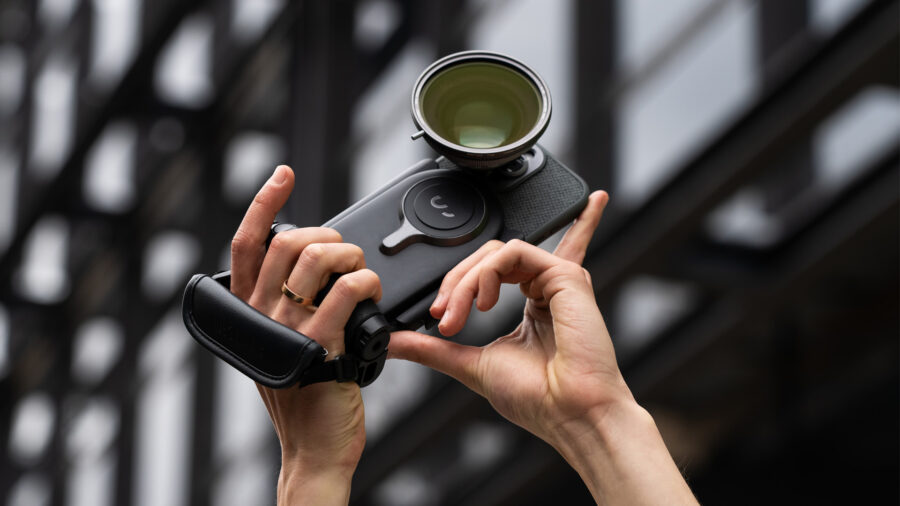
For people who are already working on mobile, this could be a practical upgrade. But it’s not exactly simplifying things. The more gear you attach to a smartphone, the more it starts to behave like any other camera—and the less “mobile” the setup becomes.
Final thoughts
TUSK and ShiftCam built CINEMA//Series around a set of lenses and filters to give mobile filmmakers more control. They seem to use quality materials and put thought into the design. Whether that translates into real-world usability will depend on how it holds up during actual production.
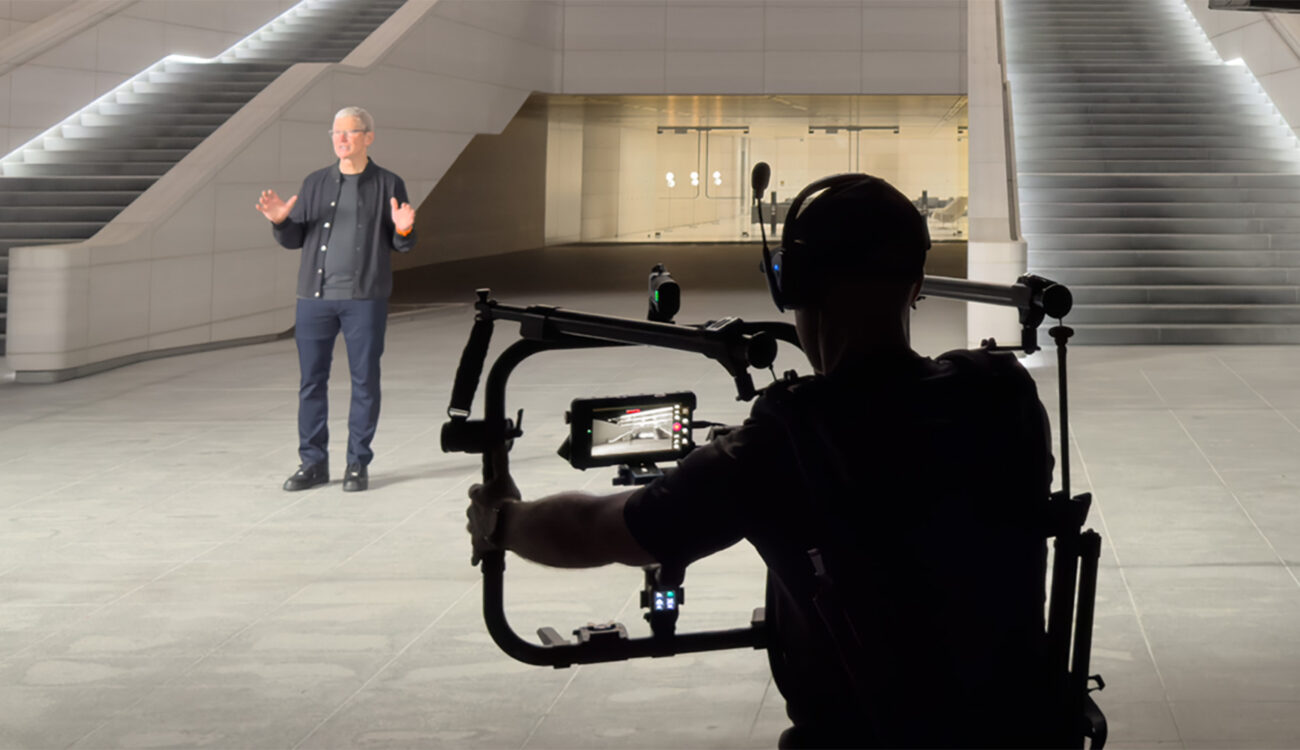
Once you start adding cases, adapters, filters, and rigs to a smartphone, the setup becomes more complex—sometimes more than it needs to be. That simplicity is what originally made mobile filmmaking appealing. When the total price enters dedicated cinema camera territory, it’s worth reconsidering what the real advantage is.
You can explore the full system and campaign details on the CINEMA//Series Kickstarter page.
At the end of every crowdfunding-related article, we remind you to be aware of the risks when backing a project on a crowdfunding platform. Also, please read the platform’s use and remember there can be significant delays when delivering the product. Some projects don’t get delivered at all.
What do you think—is this the next step for mobile filmmaking, or a step too far? Let us know in the comments.
























